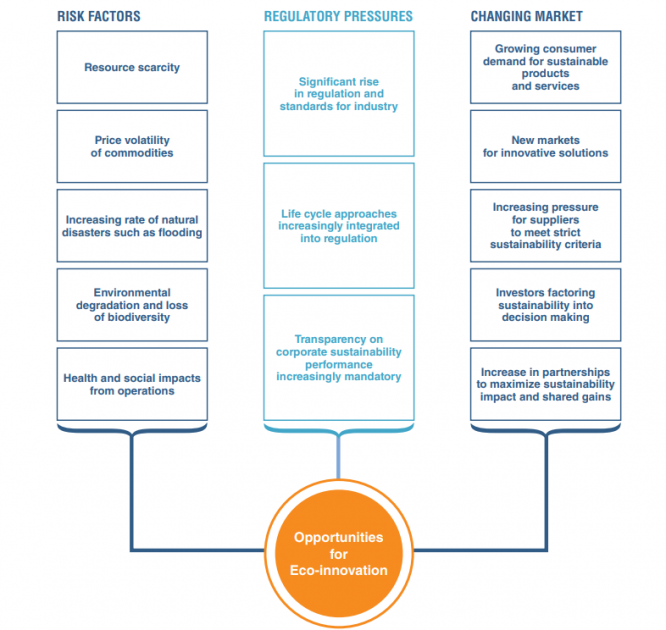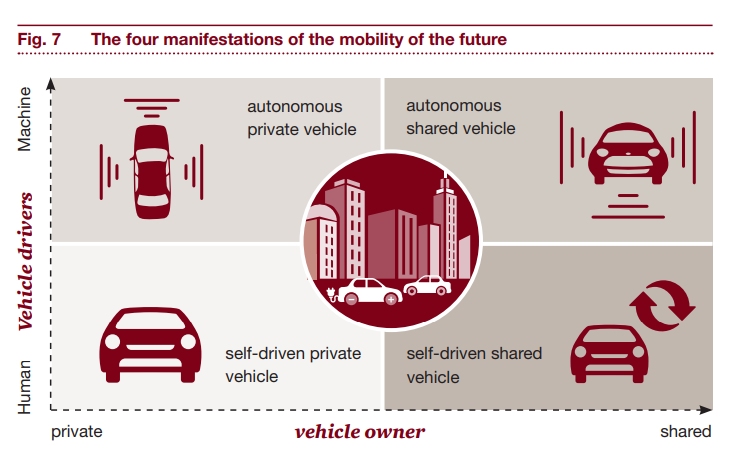Lesson 2 Eco-innovation dynamics in the automotive sector
The automotive sector as a case to discuss the formation of sectoral patterns of eco-innovation due to its role in modern societies, but positively as main transportation choice and negatively due to its enormous costs in terms of environment harm and intensive use of nonrenewable resources. Moreover, the green product innovations are related mainly to powertrain components that are easily distinguishable from “nongreen” ones.
The automotive value-chain has been dominated by relatively few OEMs, and the technological regime was introduction of incremental innovations (creative accumulation) based on a dominant-design characterized by three fundamental features:
- internal combustion engines (ICE),
- all-steel car bodies, multi-purpose character, and
- fully integrated productive processes.
The automobile based on this dominant design became an essential part of modern society, not only because its transportation function but also economically.
The performance of ICE has being improved for decades with the incremental development of many sub-systems such as fuel injection, engine cooling, lubrication, exhaustion, transmission etc., as well as other features like weight distribution and organization of the components.
The automotive industry is one of the most important and rapidly growing sectors of the global economy, and has been playing a vital role in shaping the future of transportation. The growing concern for the environment and the need for sustainable transport, the automotive industry is now focusing on eco-innovation (the process of developing environmentally friendly and sustainable products, services, and technologies).
There are several challenges that the industry is facing, such as increasing fuel prices, unpredictable demand, supply chain challenges, and growing concerns about air pollution. The semiconductor shortage alone resulted in a production loss of 1.5 million units in 2021.
The increasing pressures on business are creating favorable conditions for eco-innovation – see 3-10.Figure.

3‑10. Figure_ Increasing pressures on business are creating favorable conditions for eco-innovation
[https://www.unep.org/eco-innovation]
Eco-innovation practices have a positive influence on both sustainable performance and business performance in the automotive and auto parts industry [[i]]. Environmental protection is one of the basic pillars of the carmaker’s sustainability and the automotive industry has the opportunity to shape this fundamental restructuring.
The automobile changed from a technical to a social commodity: it guarantees the personal mobility and social participation, shapes the cities and landscapes, and structures the temporal and spatial thinking. This is why it have to rethink the whole automotive industry – with the focus on the use rather than the production of vehicles, in order to make the lives of individual users more enjoyable, more efficient and safer.
The car of the future is electrified, autonomous, shared, connected and yearly updated: “eascy” [[ii]].
Five of the top 20 companies with the highest R&D investment are vehicle manufacturers, but they do not feature among the 10 most innovative enterprises. Between 2020 and 2025 the industry will have to find ways of compensating for falling margins and rising investment. Manufacturers and suppliers should put users at the heart of their business model and offer them “eascy” mobility solutions. Implications will be the rapid redistribution of investment in research and development. Decisions regarding the long-term structure will be made between 2020 and 2025 and an illustrative representation of the mobility of the future is given in 3‑11. Figure.
 3‑11. Figure_ Manifestation of the mobility of the future
3‑11. Figure_ Manifestation of the mobility of the future
[https://www.pwc.com/gx/en/industries/automotive/assets/pwc-five-trends-transforming-the-automotive-industry.pdf]
Environmental strategic visions and plans of automotive companies are generally based on the following key objectives [[i]]: non-waste production technologies; reduction of emissions throughout the life cycle; reduction in fuel consumption and alternative sources of propulsion; replacement of non-recyclable materials; reducing the consumption of energy and water in the production process.
[i] Spirko, M., Spirkova, D., Caganova, D., Bawa, M. (2016). Eco-Innovation in Manufacturing Process in Automotive Industry. In: , et al. Smart City 360°. 2016 2015. Lecture Notes of the Institute for Computer Sciences, Social Informatics and Telecommunications Engineering, vol 166. Springer, Cham. https://doi.org/10.1007/978-3-319-33681-7_44
[i] Maldonado-Guzmán, G. and Garza-Reyes, J.A. (2020), “Eco-innovation practices’ adoption in the automotive industry”, International Journal of Innovation Science, Vol. 12 No. 1, pp. 80-98. https://doi.org/10.1108/IJIS-10-2019-0094
[ii] PWC, Five trends transforming the Automotive Industry, 2018, available at https://www.pwc.com/gx/en/industries/automotive/assets/pwc-five-trends-transforming-the-automotive-industry.pdf